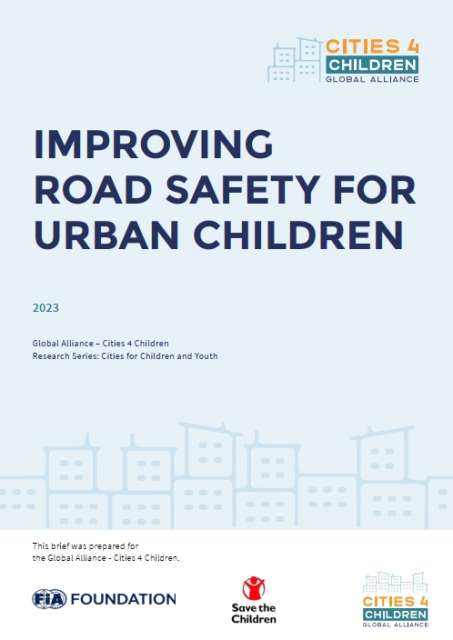IMPROVING ROAD SAFETY FOR URBAN CHILDREN
Tipo de publicação
Relatório de Pesquisa
Tipo de autoria
Instituição da Sociedade Civil
Nome do autor
Global Alliance – Cities 4 Children
Língua
Inglês
Abrangência geográfica
Internacional/Mundial
Ano da publicação
2023
Palavra chave 1
Infância
Palavra chave 2
Planejamento
Palavra chave 3
Segurança viária
Descrição
Road traffic injuries are the leading cause of death globally for children and young adults between the ages of 5 and 29.1 Every year around 220,000 children and young people die due to crashes on the world’s roads, the majority in low- and middle-income countries.2 Around ten million more are injured,3 including many left with permanent disabilities.4 Child pedestrians in deprived and excluded communities are particularly at risk.
Road traffic injuries are preventable. The Safe Systems Approach (described in Box 1) is a best practice framework for all stakeholders to follow, based on the premise that no one should die on roads, and if crashes do occur, they should not result in serious injury or death. It identifies ways to reduce risk through safe speeds, safe vehicles, safe road design, and by supporting road users to be safe.
Programmes and interventions which reduce road traffic injuries also improve health and wellbeing, the environment, and the economy. Putting children first instead of motorised vehicles requires prioritising walking, cycling, and public transport, and focusing on personal security, particularly for women and girls.
Improving road safety requires coordinated action between national and local governments, in order to set and enforce laws and invest in safe road infrastructure. City authorities have a responsibility to collect and use data to understand mobility patterns and road safety challenges, and then take steps to address these to ensure cities are safe for children to move around.
There are a number of tools that can help with this, and extensive evidence about what works and should be prioritised, including:
• Ensuring every urban street has a viable footpath and protected crossings
• Roads in areas where children are commonly present have a default speed of no more than 30km/h –
and even lower in areas where children mix with traffic
• Convenient and affordable transport options, including a network of separated cycle lanes, and
public transport
• Education and enforcement around road safety, including training road users in practical ways, and
ensuring use of child restraint systems and motorcycle helmets, and
• Investing in high quality post-crash care, including equipment and trauma facilities designed for
children, is crucial for saving the lives of those seriously injured.



 Ao navegar no Observatório da Bicicleta você concorda com os
Ao navegar no Observatório da Bicicleta você concorda com os